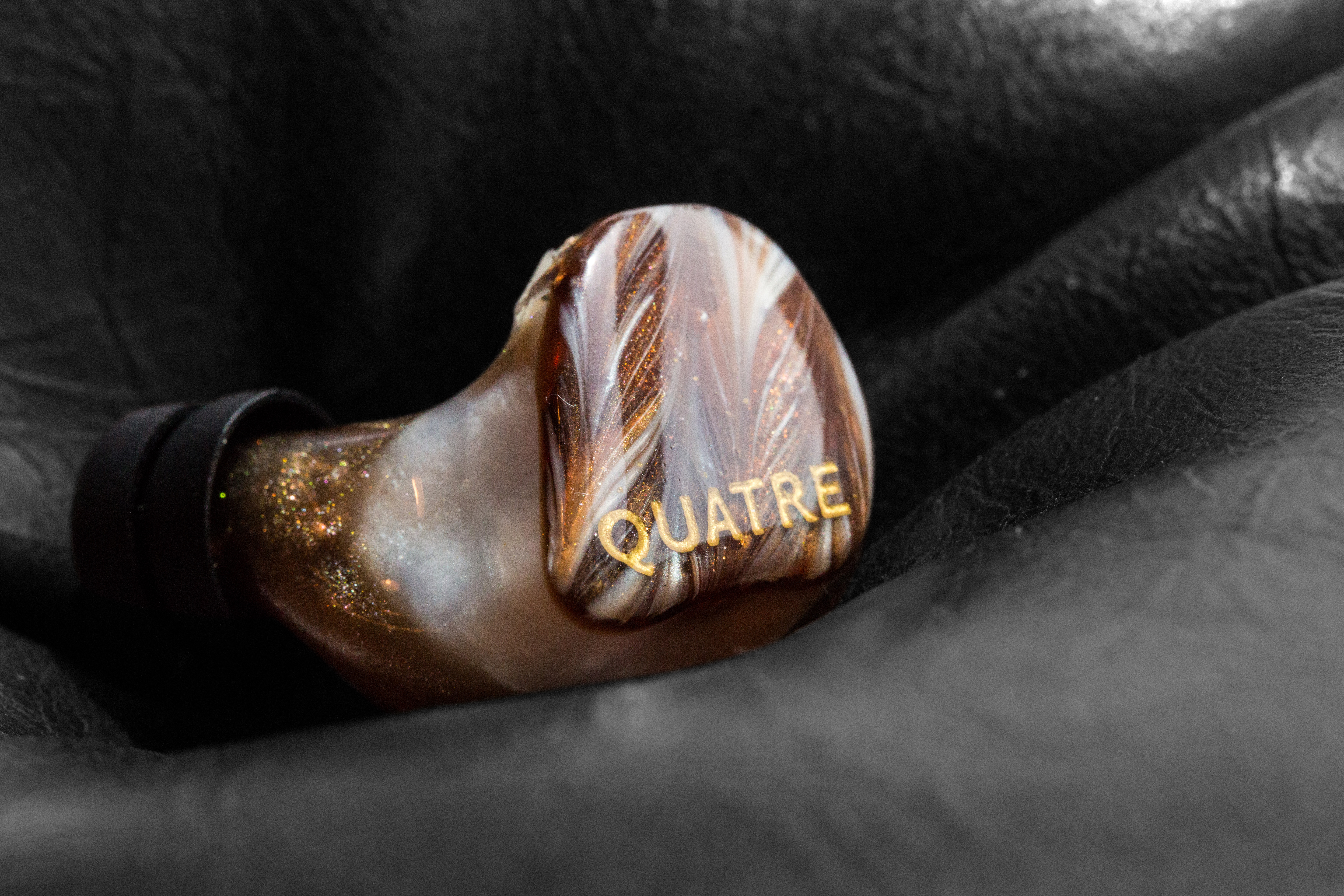The Mélange Series
This series marks the debut of Jomo Audio’s hybrid IEM technology. Designed as a foil to the Pro-Audio Series, these monitors emphasise smoothness, musicality and fun whilst maintaining competitive levels of transparency and resolve. In the same vein as the switch-equipped Flamenco, Jomo Audio is also offering impressive customisation through ACU technology; drastically altering the low-end’s presentation by shifting the speed of air within the dynamic driver’s chamber. Four distinct signatures will launch with the Déux and the Quatré, with the window open for more to follow.
Please note that all of the following prices are in Singapore dollars.
Déux (S$999 UIEM; S$1099 CIEM)
The Déux is a dual-driver hybrid with a single balanced-armature driver and a single dynamic driver. In many ways, it embodies the Jomo Audio house sound more so than its brethren do. By employing tighter notes within a stable, well-resolved stage, the Déux creates a laid-back soundscape ideal for longer listening. Additionally, a well-controlled treble region imbues the in-ear with a linear and natural tone, extending its ease across a large variety of genres. The stage it presents is the most well-proportioned of them all – extending equally in width, depth and height – though the mid-bass can inch slightly forward with select tracks. Finally, headroom is rich due to the Déux’s lower-midrange dip.
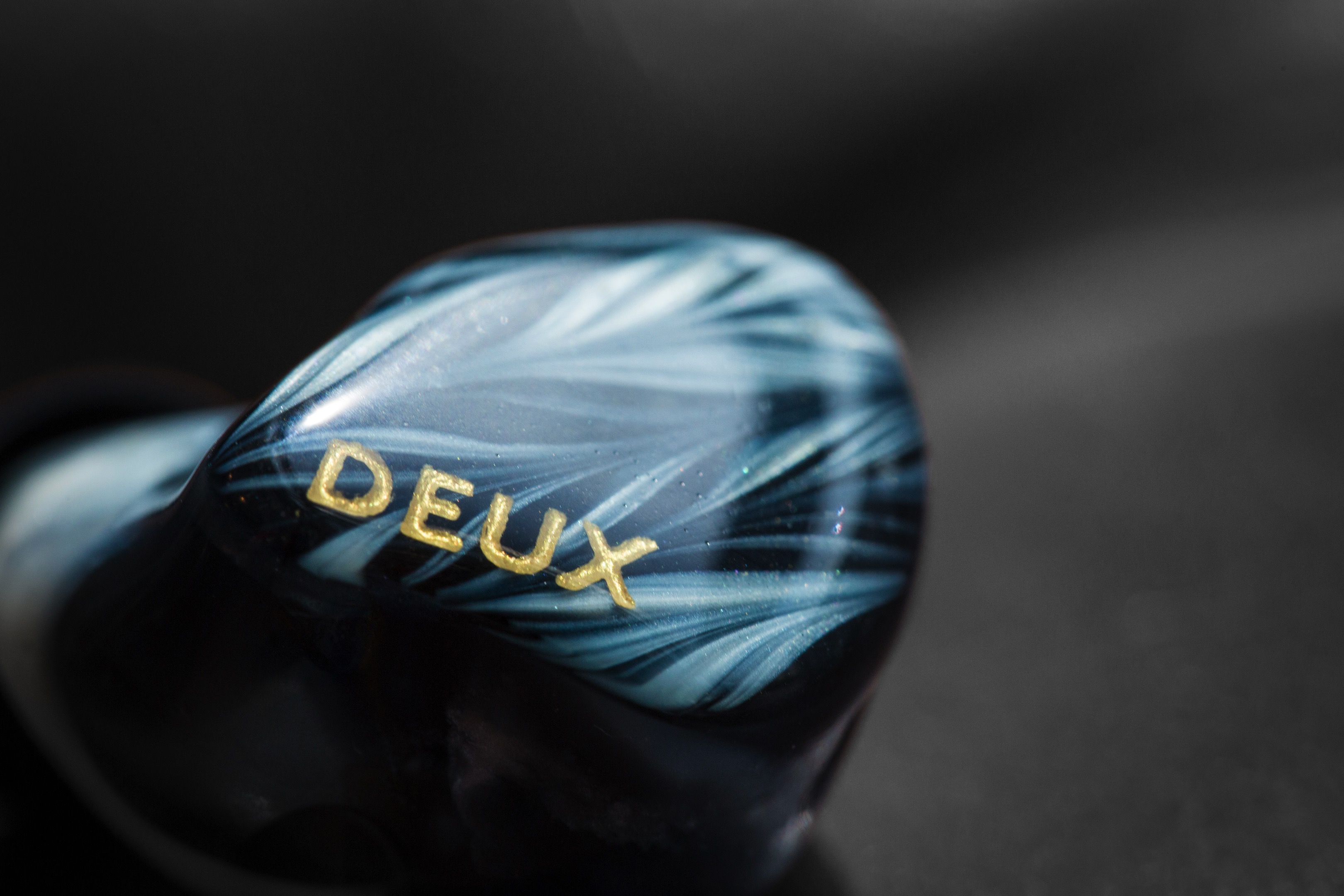
w/ Black ‘Balanced’ ACU Filter
The Déux sports impressive linearity between sub- and mid-bass. Rumble and impact ride along an equal plane, resulting in a bass line that’s both punchy and foundational. Separation and clarity is bolstered by great speed, effortlessly segregating between the kick drum and bass guitar in all occasions. The in-ear’s dynamic driver maintains much of the technology’s hallmark traits. From the thwack of kick drums to the boom of floor toms, bass instruments resonate with realism – the product of palpable physicality and an accurately warm timbre. Sufficient bloom from the mid-bass tinges the stage with musical euphony, but the low-end’s swift decay prevents it from hindering resolution.
The bass then transitions steadily into the midrange; retaining energy up to 500Hz, dipping at 1kHz and rising again before 2kHz. This results in robust and well-rounded instruments without overt chestiness. Male vocals don’t have as much grunt in this configuration (due to the linear bass), while females remain beautifully sweet with a touch of richness from the upper-bass. Thankfully though, both are natural in tone; lightly warm, dense and remarkably complete. The upper-midrange is less vibrant when compared to the other models, but this in turn creates a more coherent flow from the bass up. Although its pricier siblings are generally more resolving, clean and authoritative here, the Déux’s presentation is surprisingly one of the most realistic; a result of sheer linearity, impressive body and timbral accuracy.
For articulation and clarity, the Déux employs small peaks around 5kHz and 7kHz. These add a tizzy edge to instruments like hi-hats, cymbals and acoustic guitar. The former two lose some tactility in the process, but they maintain enough tonal accuracy for realism’s sake. Also, sufficient linearity here avoids stridence or brittleness of any kind. Vocals are more feathered in nature – especially compared to its Pro Audio brethren – but they’re less fatiguing to listen to; substituting perceived technicality for a more natural listening experience. This is because of the Déux’s steady decline past 10kHz, despite adequate extension bolstering the stereo image. So, the Déux isn’t the most transparent monitor in the world, but its superb coherence nonetheless makes it a natural, charming and oh-so-easy monitor to listen to.
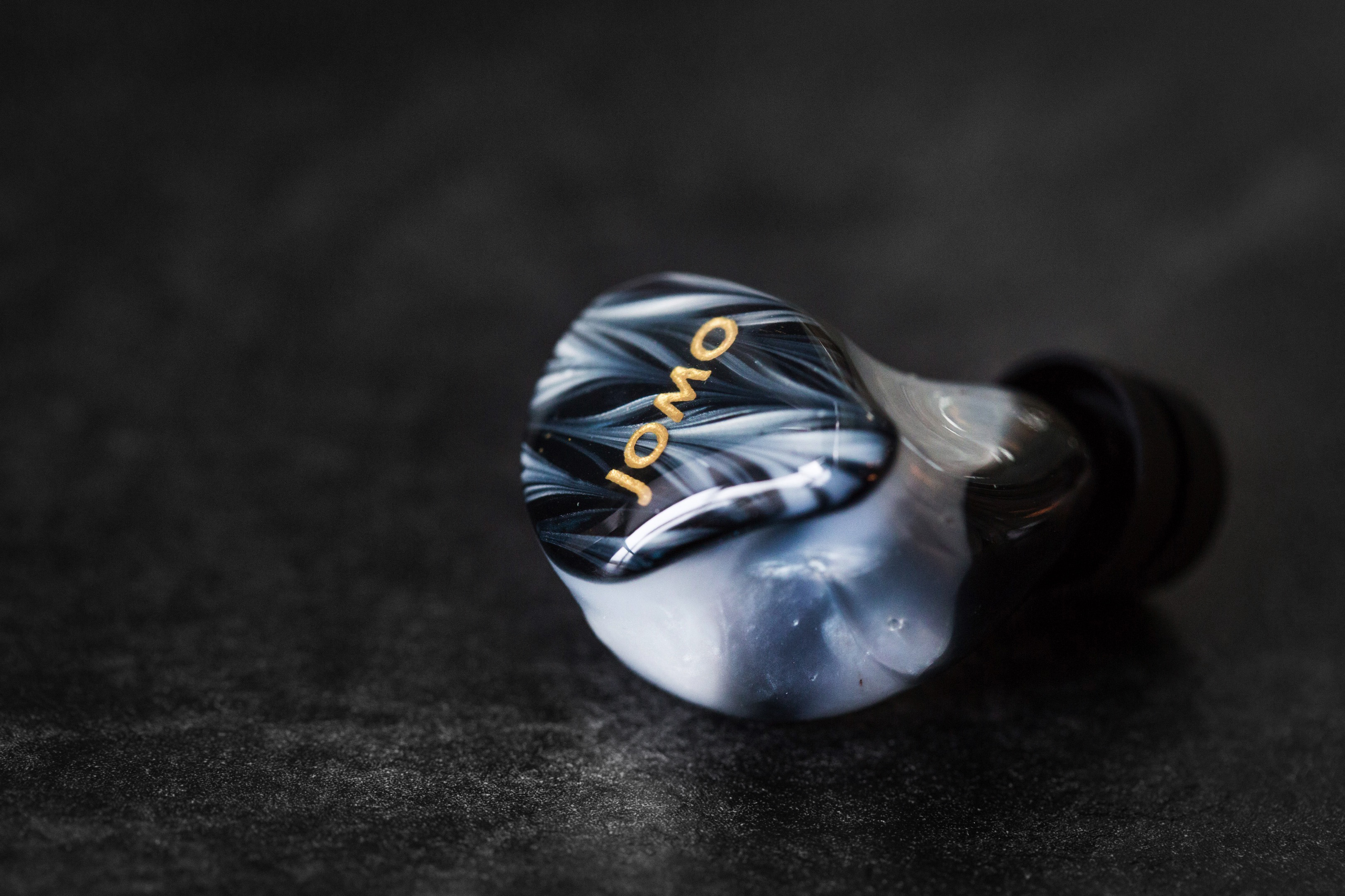
w/ Blue ‘Energetic’ ACU Filter
The blue ACU filter incites a slower low-end response. As a result, the Déux’s mid-bass take on a fluffier character; sacrificing clarity and finesse for body and warmth. This added bloom then feeds into the midrange. Vocals are perceivably more forward-sounding, with males benefitting from the added gusto. Overall dynamic energy is also increased, due to a greater contrast between the bass and the upper-midrange. Out of all the genres I listened to, this module worked best with slower-paced music like jazz. Upright basses sound wonderfully organic due to the slower, warmer decay. However in fast-paced rock or pop, the stage may get overtly saturated; especially in longer listening.
w/ Red ‘Impact’ ACU Filter
The red ACU filter is where the Déux feels slowest. The extra bloom found with the blue filter is emphasised to an excessive degree. Additionally, the accentuation extends to impact too. On tracks like Kendrick Lamar’s Alright, the drops slam with great force, accompanied by decay that occupies a large majority of the sonic image. In fact, on most EDM tracks I listen to, the warmth radiating from the mid-bass overshadow the initial transient. As a result, this added energy translates to nothing more than bloat on most occasions. Because it sacrifices too much technical performance for little in return, the red ACU filter is one I wouldn’t recommend paired with the Déux. It’s simply too much for its own good.
w/ Silver ‘Musical’ ACU Filter
The silver ACU filter highlights the Déux’s sub-bass in solidity, texture and – especially – power. The entire low-end region takes on a more guttural character; showcasing rumble reminiscent of Empire Ears’ Weapon IX drivers (though, not to that extent). What was once the foundation of the Déux’s soundscape is now visceral and skull-rattling. Thankfully, the congestion found with the red filter isn’t present here; maintaining a clean and adequately roomy stage. Though, with that said, the forwardness of the sub-bass relative to the midrange makes this configuration more situational than universal. This is the module I’d go to for a fun, enthralling, club-like sound, but not one I’d permanently attach to the Déux. But, for what it’s going for, it’s an absolute winner; engaging, satisfying and still technically sound.
Quatré (S$1999 UIEM; S$2099 CIEM)
The Quatré is the flagship of the Mélange Series. Sporting a three-plus-one configuration, it merges the smooth charm of the Déux with the energetic vibrancy of the Pro Audio Series IEMs; resulting in a predominantly w-shaped response. The Quatré populates its stage with large, engaging and detailed instruments, made all the more epic by the soundstage’s tremendous height. Stemming from its energetic signature, there’s a constant sense of immediacy in the Quatré that keeps it in high-gear; always giddy and excited in delivery. But thankfully, enough headroom is maintained in jazz tracks – for example – to remain sounding spacious and easy, regardless of the Quatré’s penchant for dynamism.
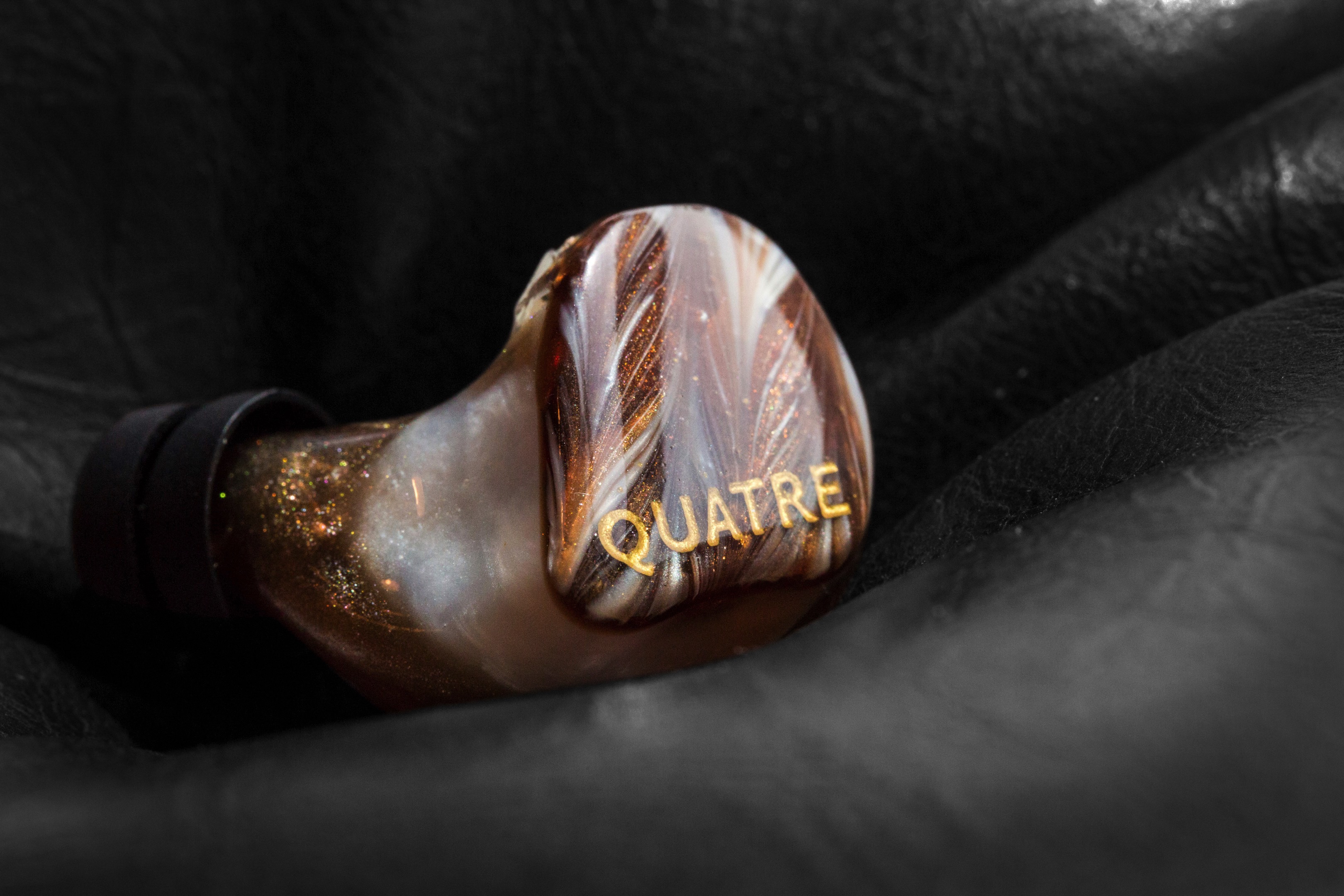
w/ Black ‘Balanced’ ACU Filter
The Quatré’s low-end is sub-bass-inclined; highlighting the texture, solidity and grunt the dynamic driver provides. Like the Tango, there’s a downward slope into the upper-bass. So, the low-end here isn’t as linear and natural as that of the Déux. However, this benefits technical performance. Low-end resolution, layering and detail is more apparent due to the Quatré’s clearer timbre. It isn’t as warm and pleasing as the Déux down low, but it’ll please listeners yearning for the sheer growl of a hybrid’s bass. With that said, due to the driver’s slightly slower decay, a euphonic warmth still seeps into the soundscape, though minimal when compared to the Déux; favouring a clearer stage and higher transparency.
Much of the Quatré’s energy stems from its vibrant upper-midrange, built upon a significant 2-3kHz bump. Instruments loom large with images that are more immersive and present than focused and precise. Though, a significant dip at 1kHz ensures these instruments are never overtly full. So, vocals source their warmth from the Quatré’s low-end; resulting in a largely neutral timbre. The upper-mid rise also contributes to the Quatré’s emphasis on vocal energy and light; rather than density or power. As a result, the Quatré may sometimes lack nuance with more complex instrumental passages. Despite excellent detail retrieval and clarity, it may miss out on the emotional resonance of a performance. Though, with that said, transparency in this region is high; resolving background reverbs and micro-details with ease.
And, this clarity comes from the Quatré’s energetic top-end. Small peaks are present throughout the lower- and upper-treble regions, imbuing the Quatré with sparkle, air and articulation. This is what gives the Quatré its near-relentless sense of engagement. Even in slower ballads, the Quatré heavily encourages active listening rather than passive. But, the thickness and speed of the notes up top prevent stridence to great effect. Tone is certainly on the brighter side of neutral, but the Quatré is never metallic nor artificial; simply vibrant and clear. Even more linearity would’ve given the monitor a stronger sense of resolution from timbral accuracy, but strong extension nonetheless endows the stage with cleanliness, openness and finesse – balancing low-end grunt with a well-separated, precise and expertly layered stage.
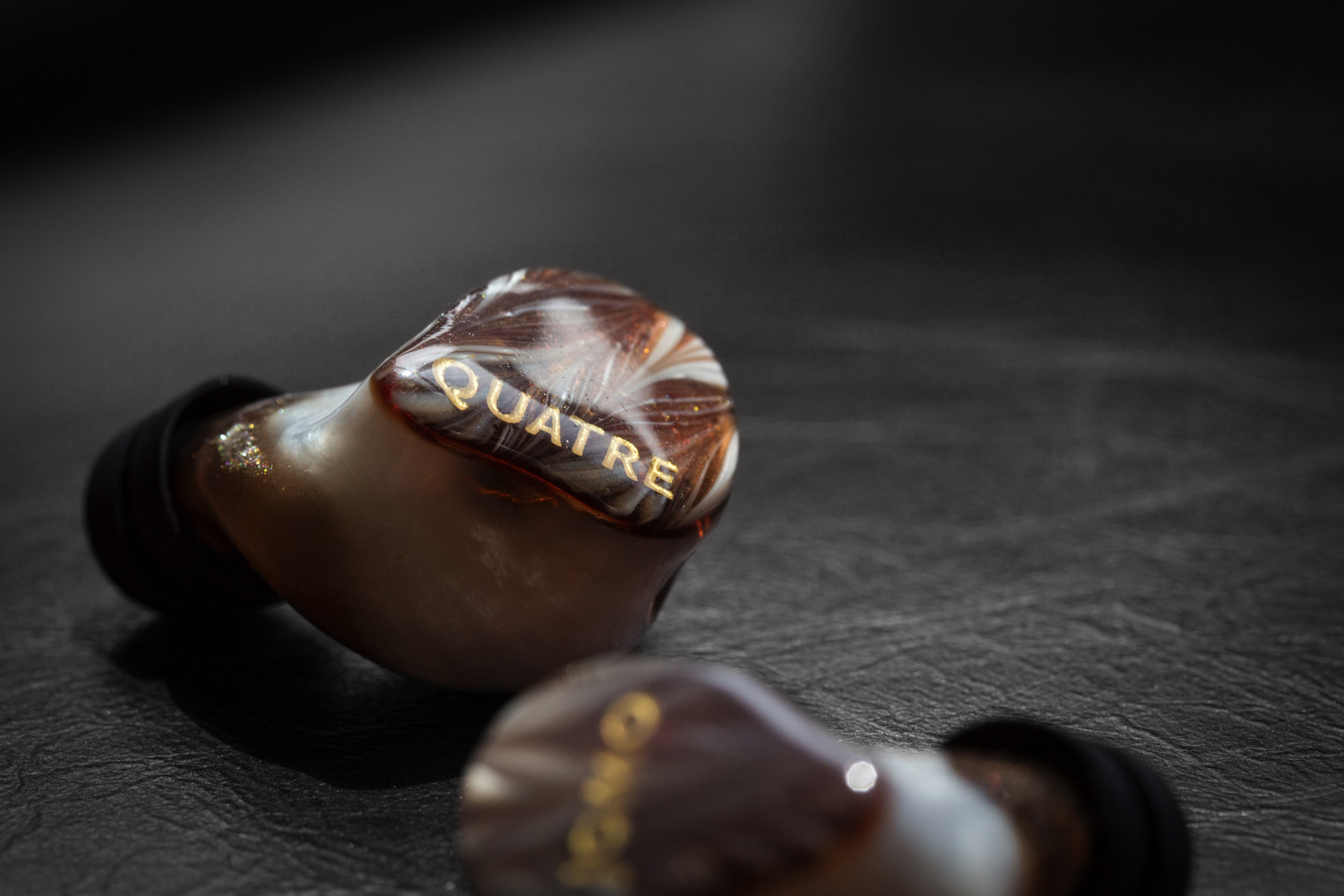
w/ Blue ‘Energetic’ ACU Filter
With the blue ACU filter, the Quatré is at its punchiest; delivering palpable, physical thumps. Despite relatively linear prominence againt to the midrange and treble, bass notes make themselves better known from increases in impact and texture. This can be chalked up to slower decay, but the stage still remains adequately clean and headroom high. Greater coherence between the sub- and mid-bass grants the Quatré a more realistic timbre, as well as denser and more solid jabs. All in all, it’s the filter for an added dose of punch without much technical compromise.
w/ Red ‘Impact’ ACU Filter
The red ACU filter represents the Quatré unleashed; exhibiting immense amounts of bass with a slight emphasis on the sub- regions. The Quatré gains vast improvements in texture, resolution and power. Obviously, this is at the detriment of tone, but this is definitely where you want to be if you’re looking for the most fun, exciting and unified presentation the Quatré can offer. Ironically, vocals gain naturalness, due to an accentuated upper-bass. The midrange becomes more well-rounded, bodied and complete, with improvements in authority and resolution. Though, vocal enthusiasts should keep the low-end’s prominence in mind before mistaking this configuration for a singer’s IEM of any kind.
w/ Silver ‘Musical’ ACU Filter
The silver ACU filter is where the Quatré’s low-end is most musical, due to a warmer, more organic and more melodious presentation. A slower decay ensures a more linear flow from the sub-bass to the mid- and upper-bass, which fills in the gaps of the midrange to produce a smoother and more coherent overall response. The bass is now darker and weightier in timbre, with a greater role in the mix than simply as the midrange and treble’s foundation. It’s further pushed forward, which boosts the Quatré musical sensibilities. Finally, it also aids dynamic performance, as the Quatré’s instruments better coalesce to form an impactful wall-of-sound, rather than a more segregated w-shaped response.
